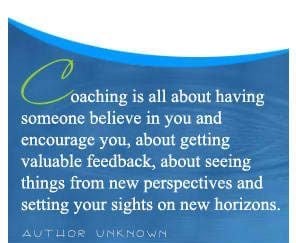May 2, 2024 in Life Coaching
5 Tips on How transforming Setbacks into Remarkable Comebacks
Life is a series of ups and downs, marked by triumphs and setbacks. In the face of adversity.
It's your turn now! Let's support each other by clicking "Helpful".
+1

DISCUSS #Relationship
DISCUSS #Parenting
Life is a series of ups and downs, marked by triumphs and setbacks. In the face of adversity, some individuals crumble while others rise stronger than ever before. What sets these resilient souls apart? How do they turn setbacks into comebacks?
This blog post delves deep into the challenges of overcoming adversity, exploring the psychological, emotional, and practical aspects of resilience.
Understanding Setbacks:
Setbacks are an inevitable part of life. They can manifest in various forms — a failed business venture, a broken relationship, a health crisis, or a career setback. Setbacks may initially evoke frustration, disappointment, and even despair. However, it is crucial to recognize that setbacks are not synonymous with failure. They are merely temporary obstacles on the path to success.
The Psychology of Resilience:
Resilience is not just about bouncing back from adversity; it’s about taking control of your life, adapting, and thriving in the face of challenges. Psychologists have long been fascinated by the resilience of some individuals. Research suggests that resilience is not an innate trait but rather a skill that can be cultivated through various strategies, empowering individuals to shape their own narratives.
One key aspect of resilience is the transformative power of reframing setbacks as opportunities for growth. Instead of dwelling on past failures, resilient individuals focus on what they can learn from the experience and how to use it to their advantage. This shift in perspective not only enables them to see setbacks as stepping stones rather than stumbling blocks but also opens up a world of possibilities for personal growth and development.
Another critical aspect of resilience is the ability to regulate emotions effectively. Resilient individuals acknowledge their feelings while maintaining a sense of optimism and hope rather than succumbing to negative emotions such as fear, anger, or self-doubt. This emotional balance allows them to navigate challenges with grace and resilience.
5 Practical Strategies for Resilience:
- Cultivate Self-Compassion: Treat yourself with kindness and understanding, especially in times of failure or setbacks. Recognize that everyone faces challenges, and it’s okay to make mistakes. Practice self-compassionate self-talk to counter negative thoughts and emotions.
- Build a Supportive Network: Surround yourself with people who uplift and encourage you. Cultivate relationships with friends, family, mentors, or support groups who believe in your abilities and offer guidance and perspective during difficult times. A robust support system can provide emotional validation and practical assistance when needed.
- Develop Problem-Solving Skills: Enhance your ability to navigate challenges by developing practical problem-solving skills. Break down problems into manageable steps, brainstorm potential solutions, and evaluate their feasibility. Approach setbacks with a solution-oriented mindset, focusing on practical actions you can take to overcome obstacles.
- Practice Mindfulness and Stress Management: To build resilience, incorporate mindfulness techniques and stress management practices into your daily routine. Engage in meditation, deep breathing exercises, or yoga to cultivate awareness of your thoughts and emotions, reduce stress levels, and promote mental clarity and emotional balance.
- Maintain a Healthy Lifestyle: Prioritize self-care practices to care for your physical and psychological well-being. Ensure you sleep well, eat a balanced diet, exercise regularly, and engage in activities that bring you joy and relaxation. A healthy lifestyle strengthens your resilience by providing you with the energy and vitality needed to face life’s challenges with resilience and determination.
Overcoming Self-Doubt:
Overcoming Self-Doubt: one of the most significant challenges in turning setbacks into comebacks is overcoming self-doubt. When faced with failure, it is natural to question one’s abilities and worth. However, dwelling on self-doubt only perpetuates a cycle of negativity and hinders progress. In this section, we will explore strategies to overcome self-doubt and build self-confidence.
To overcome self-doubt, it is essential to cultivate self-compassion and self-confidence. Instead of berating oneself for past mistakes, resilient individuals practice self-compassion by treating themselves with kindness and understanding. This self-compassion acts as a shield against self-doubt, allowing individuals to focus on their past successes and strengths, bolstering their confidence and resilience in adversity.
Building Resilience: Practical Exercises and Actionable Steps
While understanding the concept of resilience is essential, putting it into practice is where true transformation occurs. Here are additional actionable steps and exercises to help you cultivate resilience in your own lives:
- Gratitude Journaling: Each day, take a few moments to write down three things you’re grateful for, no matter how small. This practice helps shift focus away from setbacks and towards the positive aspects of life, fostering resilience in the face of adversity. In this section, we will explore the benefits of gratitude journaling and provide tips on how to make it a part of your daily routine.
- Challenge Your Comfort Zone: The first step is to identify an area where you feel stuck or stagnant. This could be in your personal life, career, or relationships. Once you’ve identified this area, set a small, achievable goal that pushes you out of your comfort zone. This could be initiating a difficult conversation, trying a new hobby, or taking on a new responsibility. Embracing discomfort builds resilience and confidence. This will guide you through identifying your comfort zone and setting challenging goals.
- Visualization Techniques: Spend a few minutes each day visualizing yourself overcoming obstacles and achieving your goals. Picture yourself facing setbacks with calmness and determination, finding creative solutions, and ultimately succeeding. Visualization is a powerful tool that can help you build resilience and reinforce your belief in overcoming challenges.
- Practice Flexibility: Life rarely goes according to plan, and unexpected obstacles are inevitable. Instead of rigidly adhering to a specific outcome, practice flexibility and adaptability in your approach. When setbacks arise, view them as detours rather than roadblocks, and adjust your course accordingly.
- Seek Growth Opportunities: Embrace personal and professional growth opportunities, even if they initially seem daunting. Take on new challenges, pursue learning opportunities, and seek feedback from mentors or peers. Viewing setbacks as opportunities for growth reframes adversity as a catalyst for self-improvement and resilience.
- Create a Resilience Toolkit: Compile a toolkit of resources and strategies that help bolster resilience during difficult times. This toolkit might include inspirational quotes, calming music playlists, relaxation techniques, or a list of supportive contacts to contact when needed. Having these resources readily available equips you to navigate setbacks with greater ease.
- Celebrate Small Wins: Acknowledge and celebrate your progress, no matter how incremental. Each small victory builds momentum and reinforces resilience. Whether completing a challenging task, overcoming a fear, or practicing self-care, take time to recognize and celebrate your achievements.
- Reflect and Learn: After facing a setback, it’s essential to take the time to reflect on the experience and extract valuable lessons. What worked well? What could have been done differently? Use setbacks as opportunities for reflection and learning, refining your approach and strengthening resilience for future challenges. This will guide you through reflection and learning and provide tips on making the most of your setbacks.
By incorporating these practical exercises and actionable steps into their daily lives, readers can cultivate resilience and transform setbacks into opportunities for growth and empowerment. Remember, resilience is not about avoiding adversity but embracing it as an integral part of the journey toward personal and professional fulfillment.
Here are five journaling questions designed to help overcome self-doubt during setbacks:
Reflect on the setback and consider what valuable insights or lessons it may hold. Explore how the experience can contribute to your personal growth and development. Identifying the lessons learned can help shift your perspective from self-doubt to self-improvement.
Challenge your self-doubt by examining evidence from your past successes, strengths, and achievements. Reflect on instances where you’ve overcome challenges or demonstrated resilience. Acknowledging your accomplishments can counteract negative self-perceptions and boost confidence in your abilities.
Imagine that a close friend is facing the same setback you’re experiencing. Consider how you would offer them support, encouragement, and advice. Applying a compassionate and objective perspective to your own situation can help you cultivate self-compassion and kindness towards yourself.
Shift your focus from dwelling on self-doubt to taking proactive steps toward recovery and progress. Brainstorm actionable strategies and solutions for overcoming the setback. Break down your goals into smaller, manageable tasks, and create a plan of action to move forward with confidence and determination.
Identify affirmations or empowering mantras that resonate with you and counteract negative self-talk. Write down positive affirmations that affirm your worth, strengths, and resilience. Incorporate these affirmations into your daily routine through journaling, meditation, or repeating them aloud to reinforce a mindset of self-belief and positivity.
Journaling responses to these questions can provide clarity, insight, and motivation to overcome self-doubt and navigate setbacks with resilience and confidence.
“Amid the chaos, there is also opportunity.” — Sun Tzu.
Turning setbacks into comebacks is not easy, but it is possible. By cultivating psychological resilience, overcoming self-doubt, and implementing practical strategies for success, individuals can navigate adversity with grace and emerge more vital than ever before.
As the saying goes, “Smooth seas do not make skillful sailors.” It is through facing and overcoming challenges that we truly grow and thrive. So embrace setbacks as opportunities for growth, and let your resilience shine. After all, the most remarkable comebacks often follow the most devastating setbacks.
Are you tired of feeling held back by limiting beliefs? Ready to flip the script on negative thought patterns and unlock your full potential? Look no further than “Flip It.” The newsletter is packed with insightful strategies, practical tips, and inspiring stories designed to help you break free from the constraints of self-doubt and fear.
As you embark on your journey to self-discovery, remember that just like an iceberg, there is so much more beneath the surface waiting to be explored. By delving into the depths of your being, you’ll uncover hidden strengths, passions, and truths that will guide you toward a more fulfilling and authentic life.
I invite you to download my free guide, “Journey to Self-Discovery: Unveiling Your Inner Iceberg,” and let it serve as your compass on this transformative adventure.
Embrace the unknown, embrace the process, and watch as you blossom into the fullest expression of yourself. Together, let’s dive deep and discover the magnificent depths within.









 Thank you for your help!
Thank you for your help!